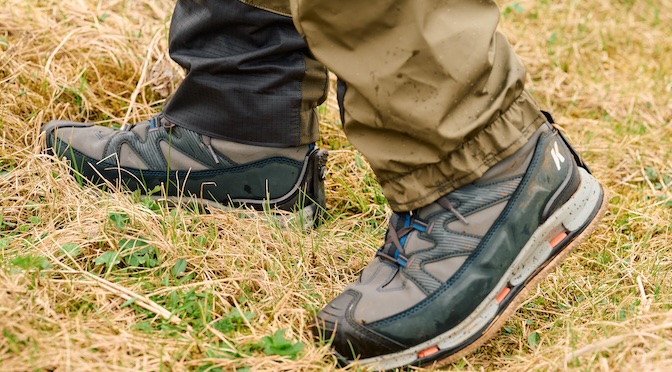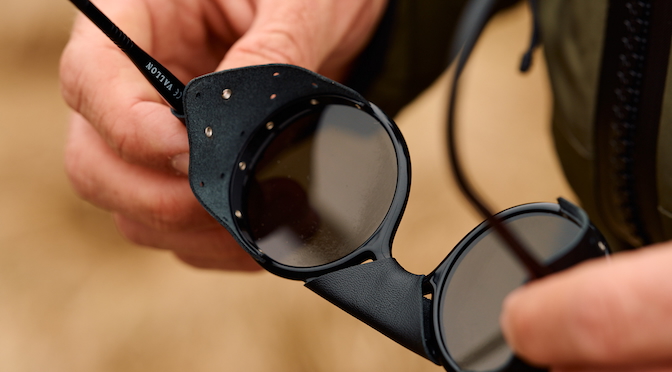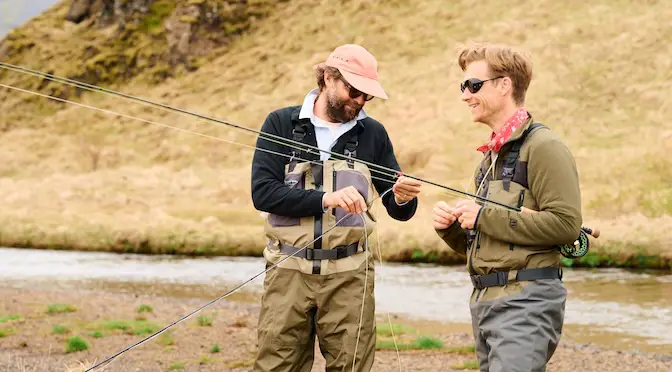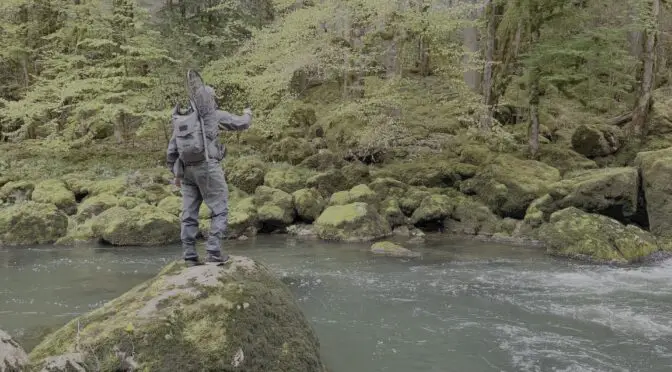Last updated on January 15th, 2024.
Fly fishing for trout in Japan can be traced back at least to the fifteenth century, using a horsehair line attached to a bamboo rod.
Not so different from today’s tenkara method, though that name only appears in the late nineteenth century. Today, fly fishing remains a popular sport in Japan and most rivers and lakes are managed by local cooperatives who sell licenses on their ‘beats’ by the day.
The waters within a few hours of Tokyo are very busy at the weekends. That’s why we chose a midweek day and drove with our guide Ebi about two hours west from Tokyo. We passed over Yabitsu Pass to the Tanzawa Ohyama Prefectural Natural Park. A narrow winding road took us over the pass and into a lush valley full of trees. There we found the Sagame, a lively stream still a bit swollen with rainfall from the week before.
Seeking native species of Trout in Japan – the Yamame and the Iwana
The Yamame is technically a salmonid and has multiple variations. Some Yamame are anadromous; these are called sakura masu or cherry salmon because they ascend the rivers in May when the cherry trees bloom. They are highly prized, much like steelhead in our part of the world. The landlocked version is a cousin to the rainbow trout. It is much smaller, and can spawn multiple times in its native river.
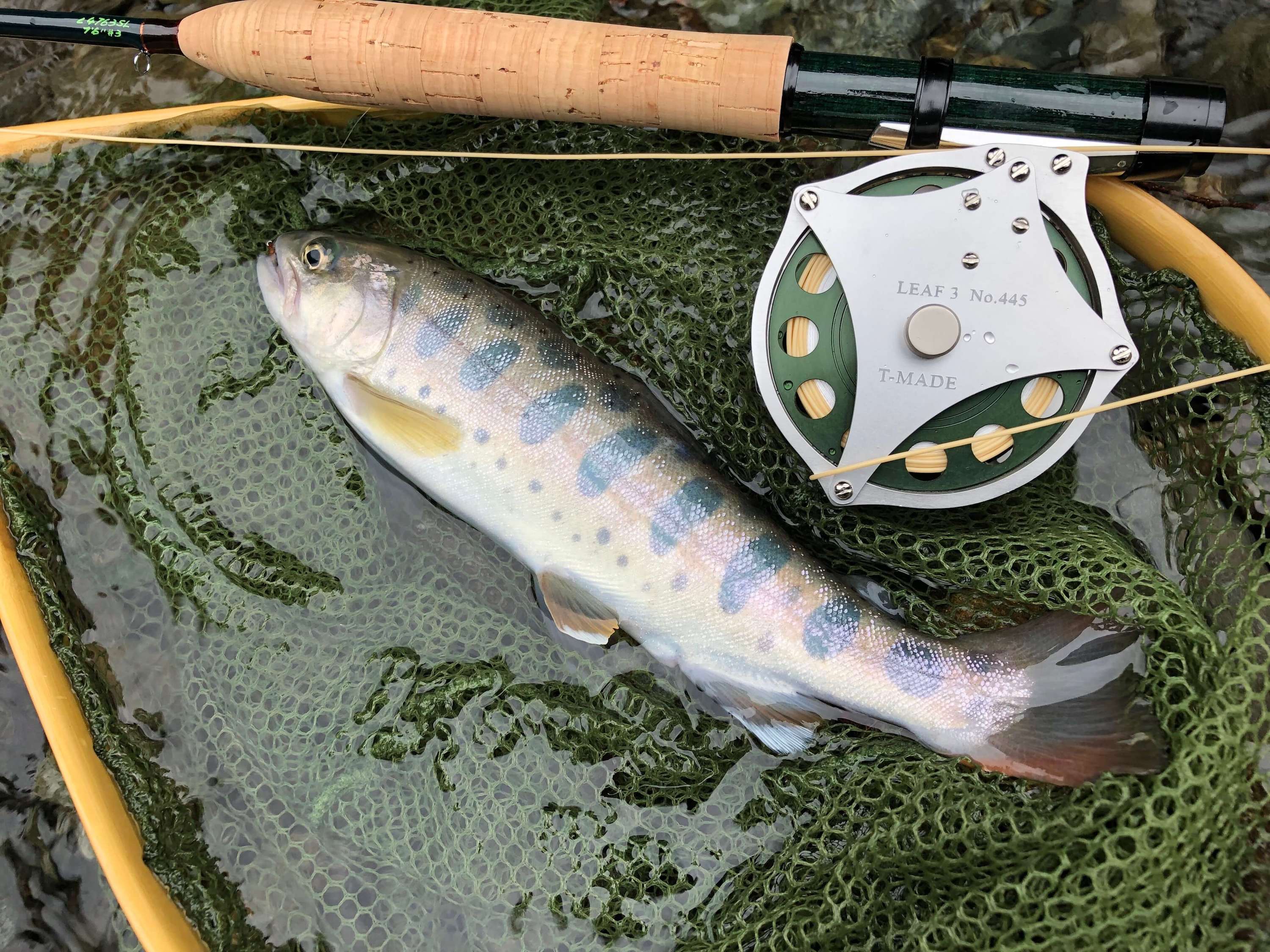 A Yamame trout in Japan caught doing some Japanese fly fishing
A Yamame trout in Japan caught doing some Japanese fly fishing
The Iwana is a char and resembles a brook trout in coloration. In Japanese, Iwana is written with three kanji characters – stone, mountain and fish. They fight like a brookie too – scrappy and tenacious.
Japan Fly Fishing: Heavy Rain – High Water
Heavy rainfall a week or so prior had raised water levels and created faster main flows, so we worked the edges and seams most of the time. The water was extremely clear, so we were able to cast to specific fish in most parts of the stream, and to groups in some of the pools. However the clear water also made the fish very aware of our movements and easily spooked.
Ebi advised us to ‘fish like a ninja’… casting while crouching low behind rocks or trees. Of course these awkward casting positions plus many low-hanging branches meant we left a few flies dangling in the branches above (where we spotted a few from prior anglers as well). The fish were very choosy, so we changed patterns every few casts seeking something interesting enough to tempt them up from their lies.
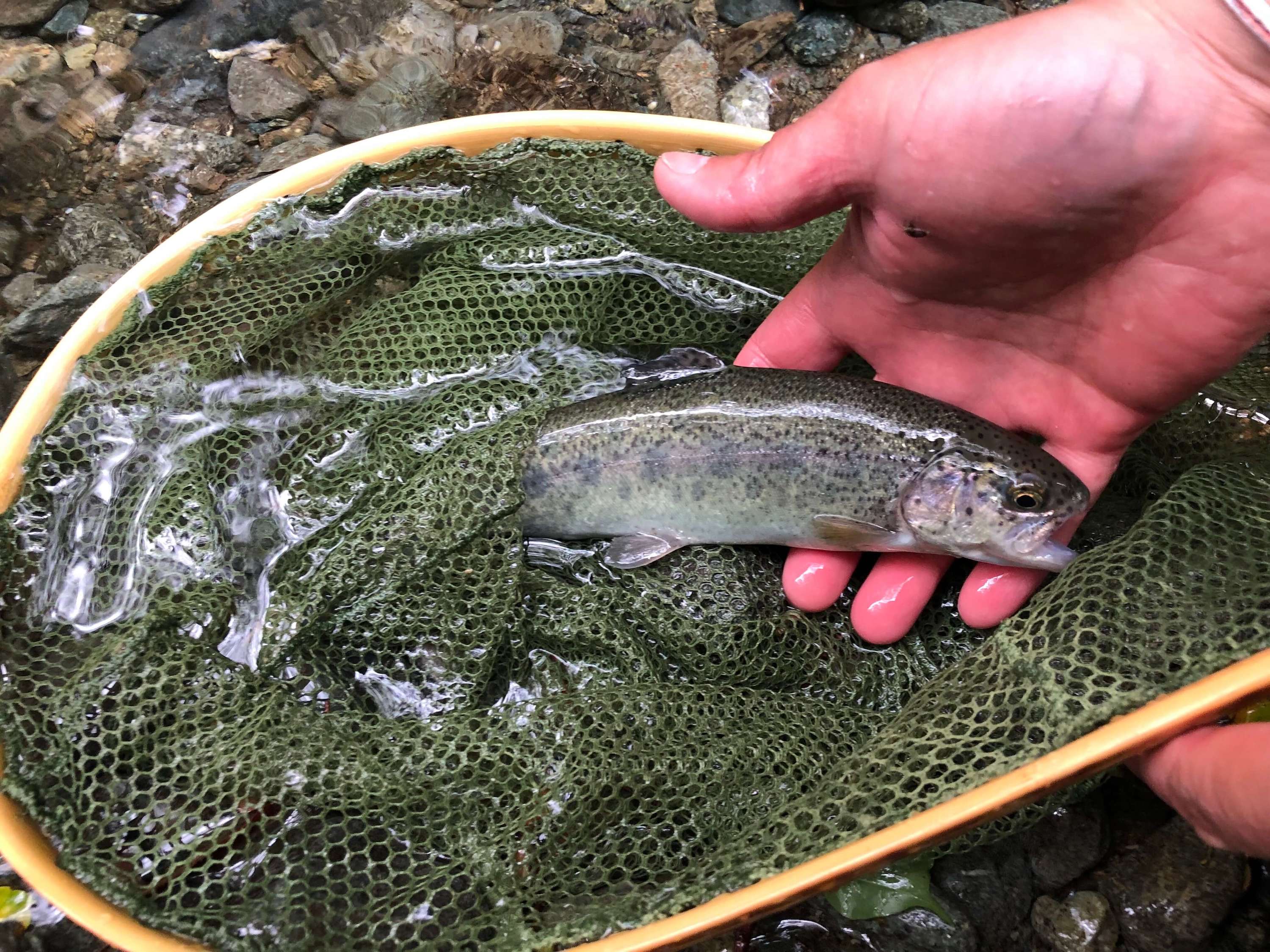 Netting a small trout in Japan
Netting a small trout in Japan
The morning was cool, with no visible insects on the water and the best action was on nymphs with an indicator (standard bead-heads – hare’s ear, a scarlet-colored pheasant tail, and a pattern that resembled a Copper John). Later in the day it warmed a bit and we saw more surface activity, so I was able to take a few on variations of elk hair caddis.
The largest fish we saw were rainbows, with similar coloration but less visible ‘striping’ than those we see in the Pacific Northwest. The largest fish of the day was around 12 inches… for today, a leviathan.
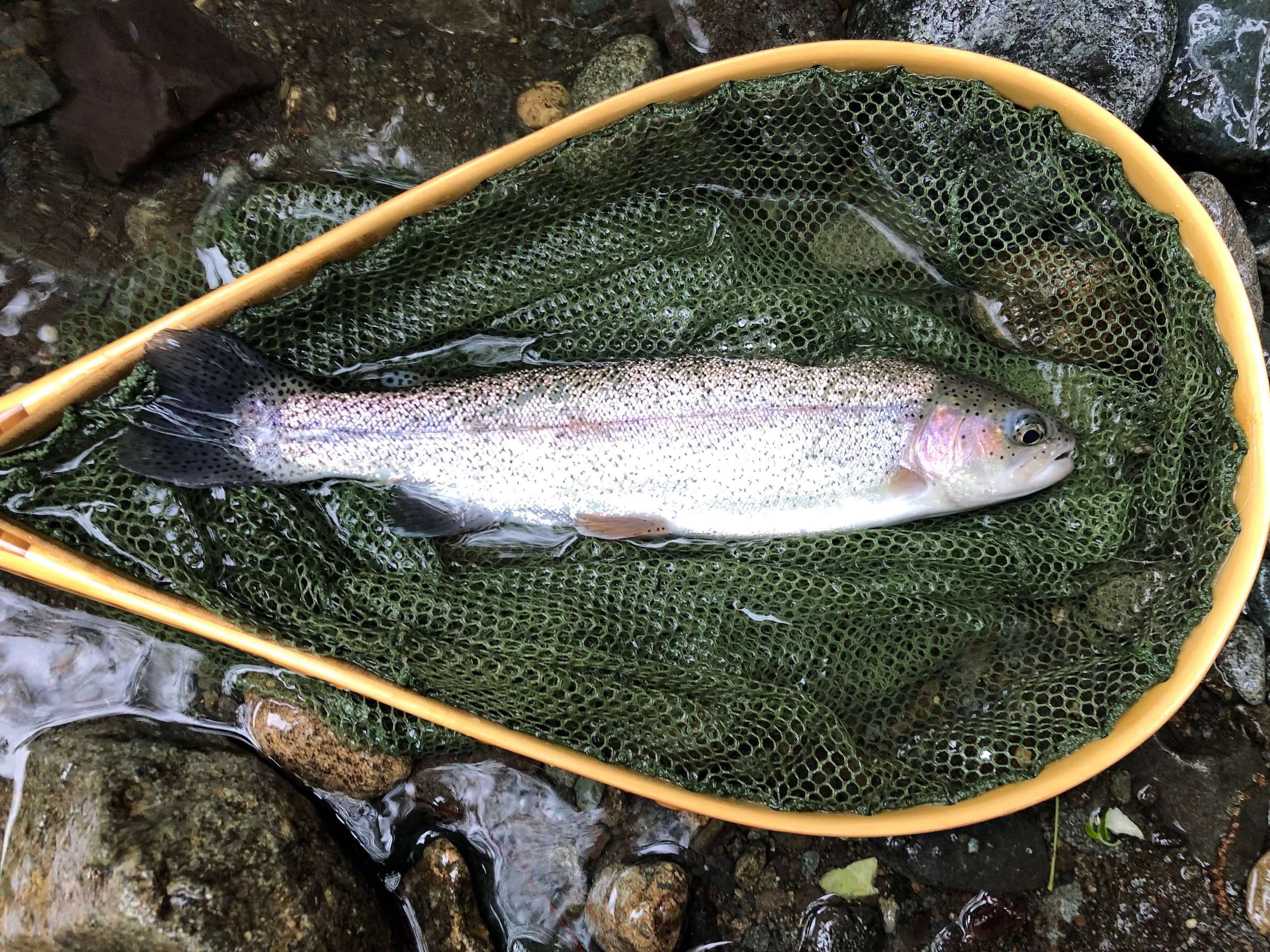 A Japanese rainbow trout caught doing some Japanese Fly Fishing
A Japanese rainbow trout caught doing some Japanese Fly Fishing
If trout in Japan are poetry, the landlocked Yamame and the Iwana are usually haiku – small but powerful for their size.
What to know about fly fishing Japan
We were guided by Ebi of Trout & King – www.troutandking.com, (03)3544-5251, ebi@troutandking.com. Ebi speaks very good English and is a very patient and talented guide. He handled all logistics, including transport from / to our hotel, gear, and fishing licenses. He guides all over Japan (including Hokkaido where the fish can run very large indeed), and various destinations around the world as well.
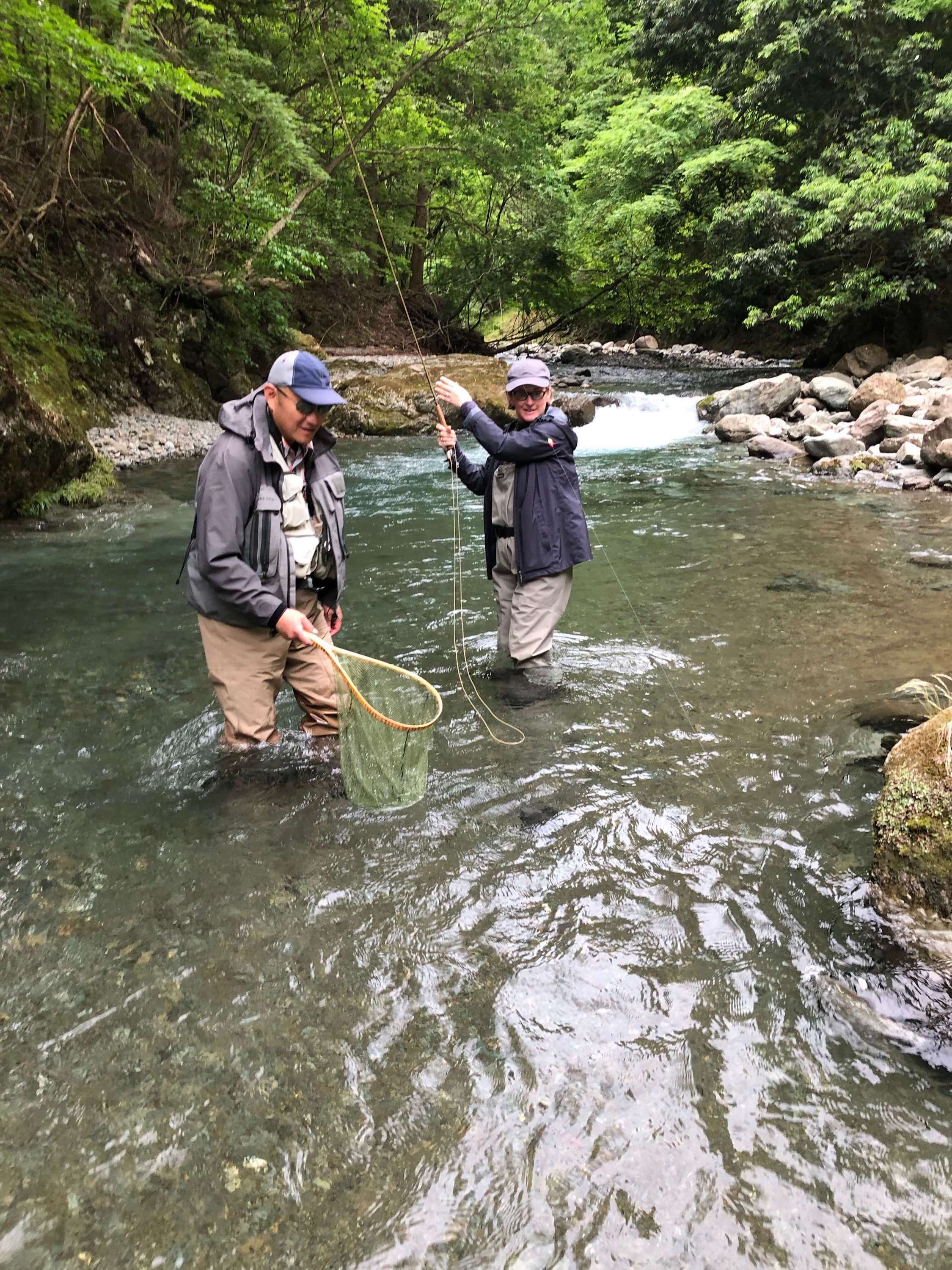 Trout fishing in Japan
Trout fishing in Japan
FAQs
What are the primary species of trout targeted in Japanese fly fishing?
Japanese fly fishing enthusiasts often target several species of trout, including amago (Japanese char), iwana (Japanese white-spotted char), yamame (Japanese landlocked salmon), and rainbow trout. Each species presents unique challenges and characteristics.
When is the best season for fly fishing for trout in Japan?
The optimal season for fly fishing in Japan varies depending on the region and species targeted. Generally, spring and autumn are favored seasons, offering pleasant weather conditions and active trout.
What types of fly patterns are effective for trout in Japanese waters?
Effective fly patterns for Japanese trout include both traditional Western patterns and those inspired by local insect hatches. Kebari (traditional Japanese flies) and imitations of native aquatic insects are popular choices among fly anglers.
Are there specific techniques unique to Japanese fly fishing for trout?
Japanese fly fishing often incorporates traditional tenkara techniques, a fixed-line method without a reel. Tenkara is well-suited for smaller streams and offers a minimalist approach, emphasizing precise casting and presentation.
Are there regulations or etiquettes to be aware of when fly fishing for trout in Japan?
Anglers should be aware of local fishing regulations, catch-and-release practices, and etiquettes specific to Japanese fly fishing culture. Respecting nature, fellow anglers, and adhering to conservation principles are essential for a positive fishing experience.

